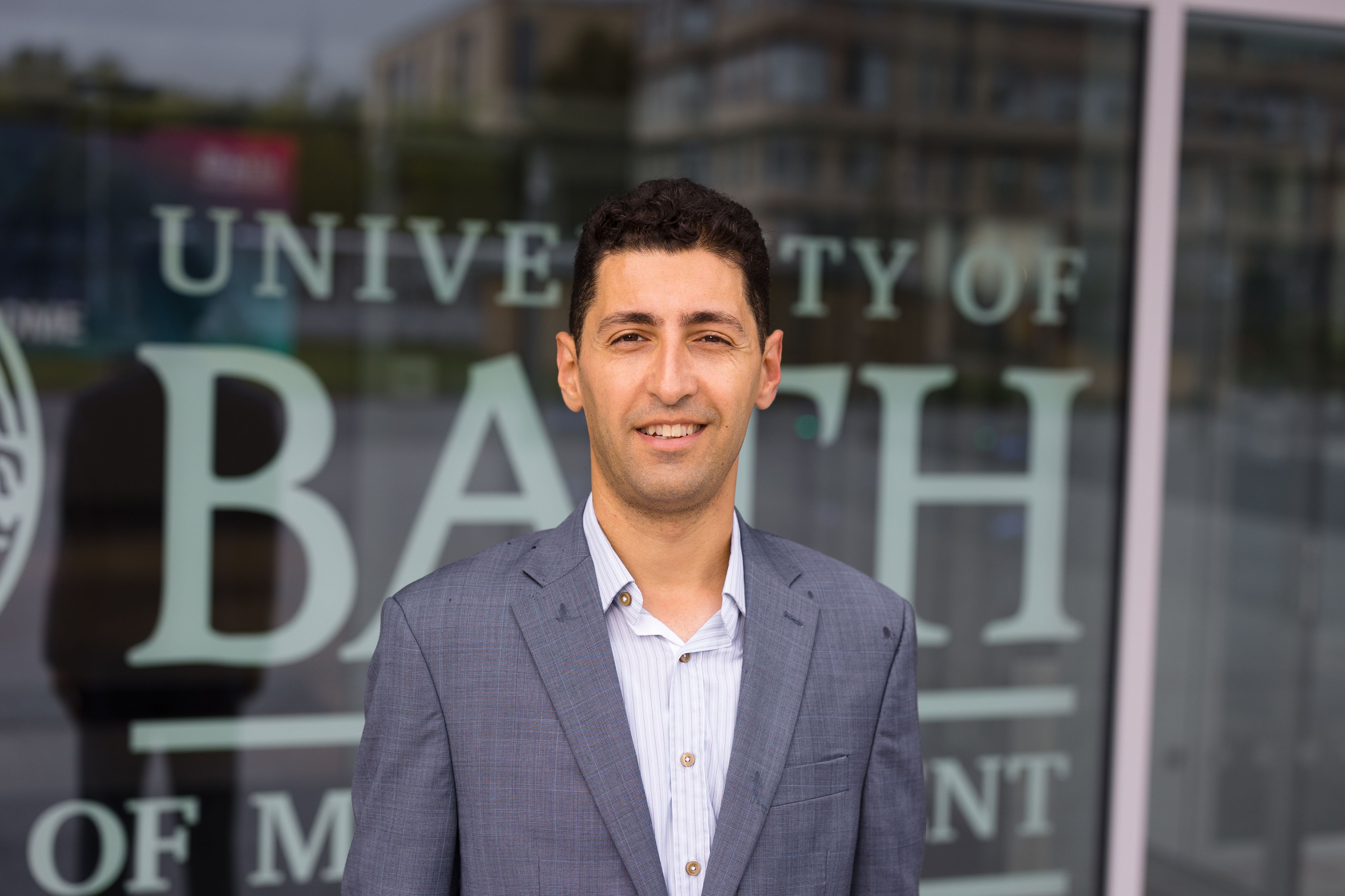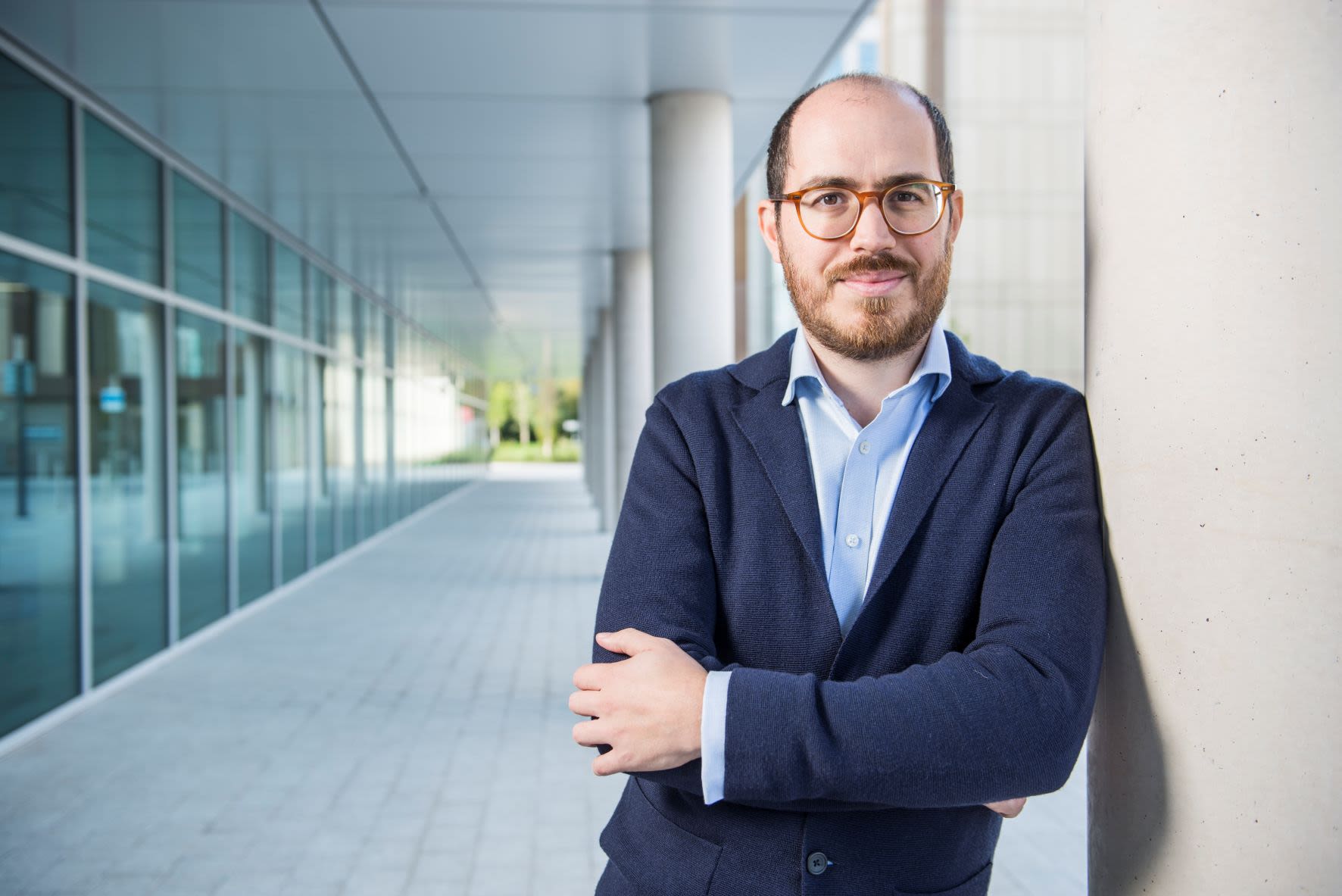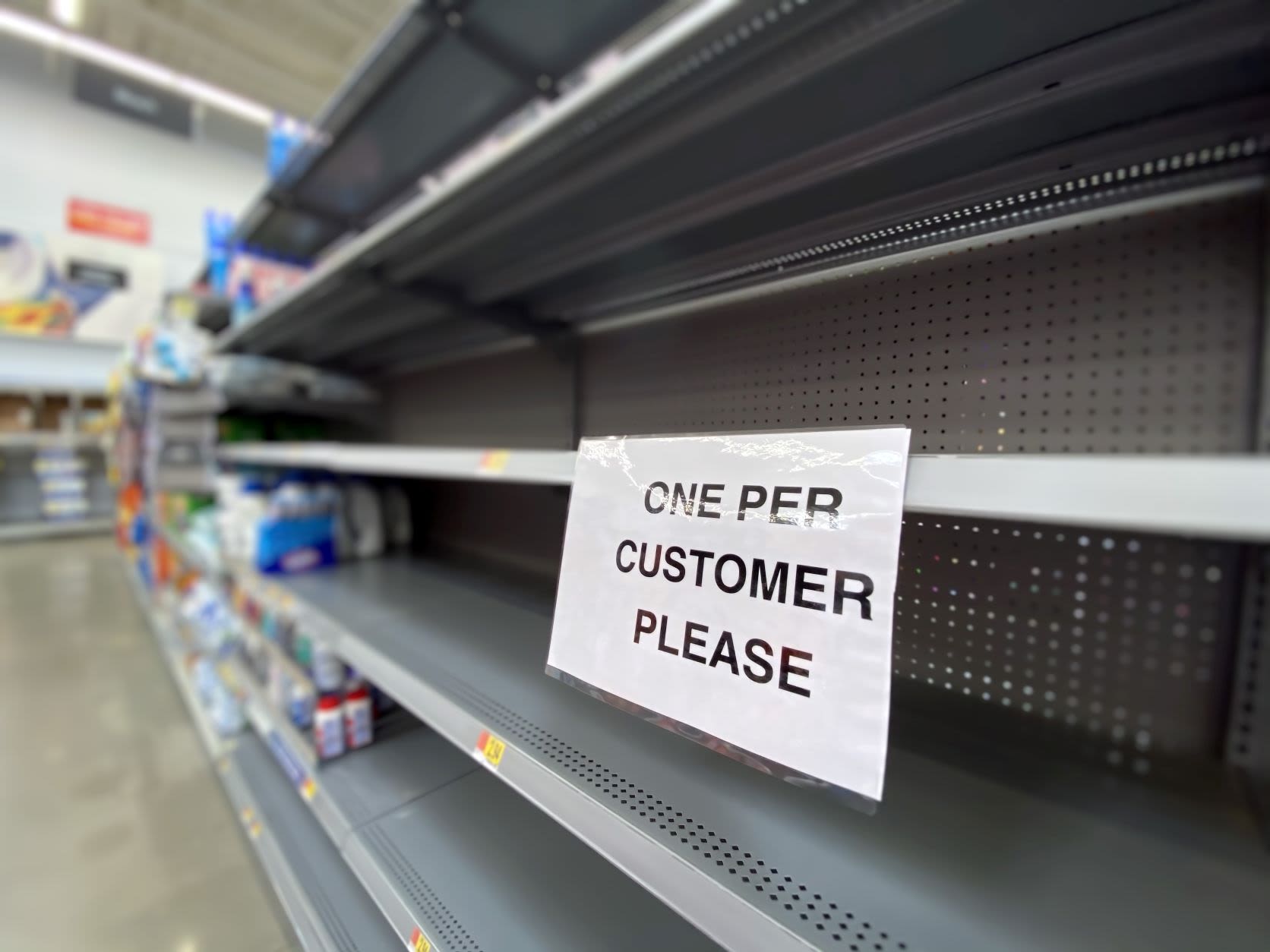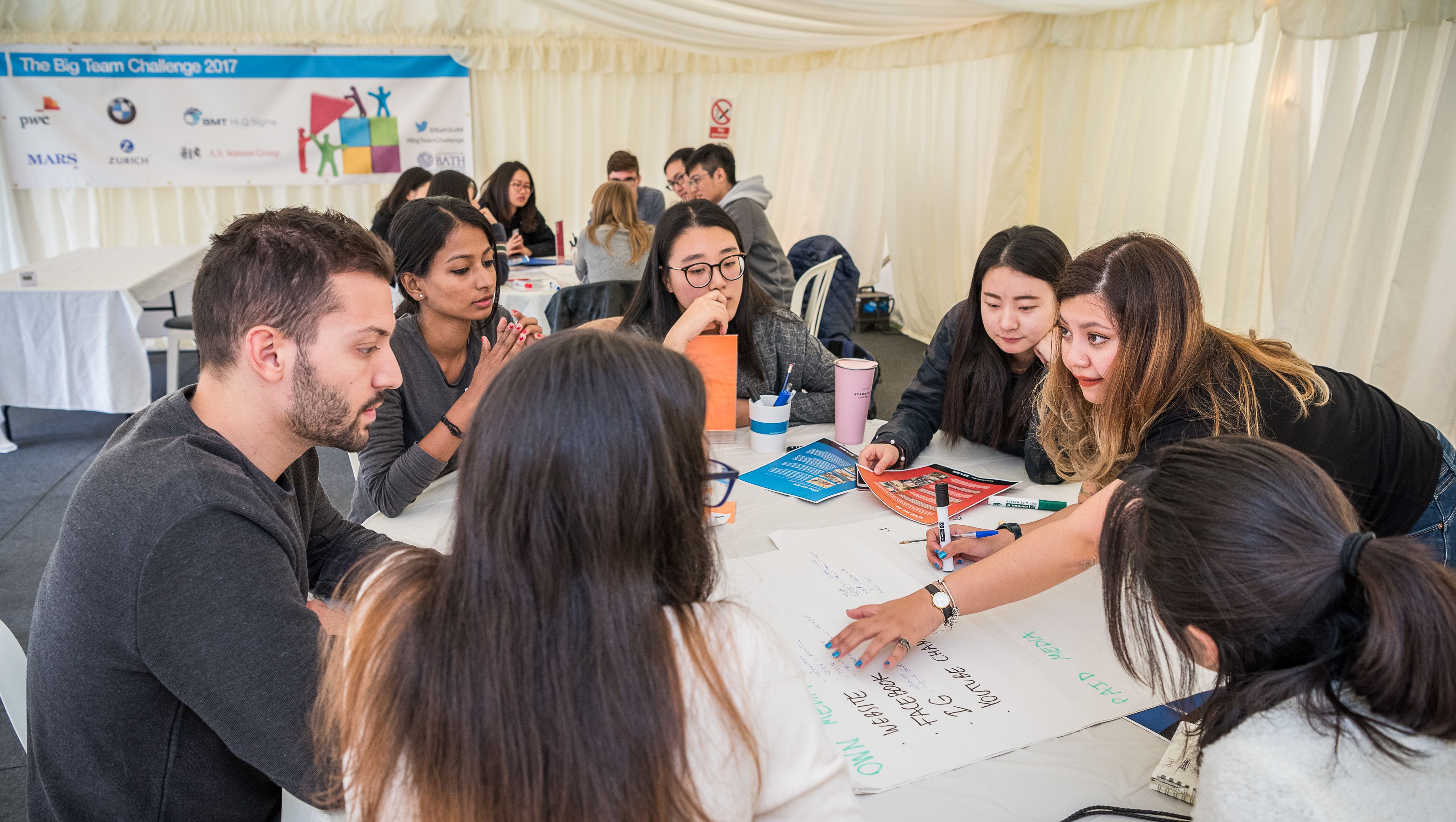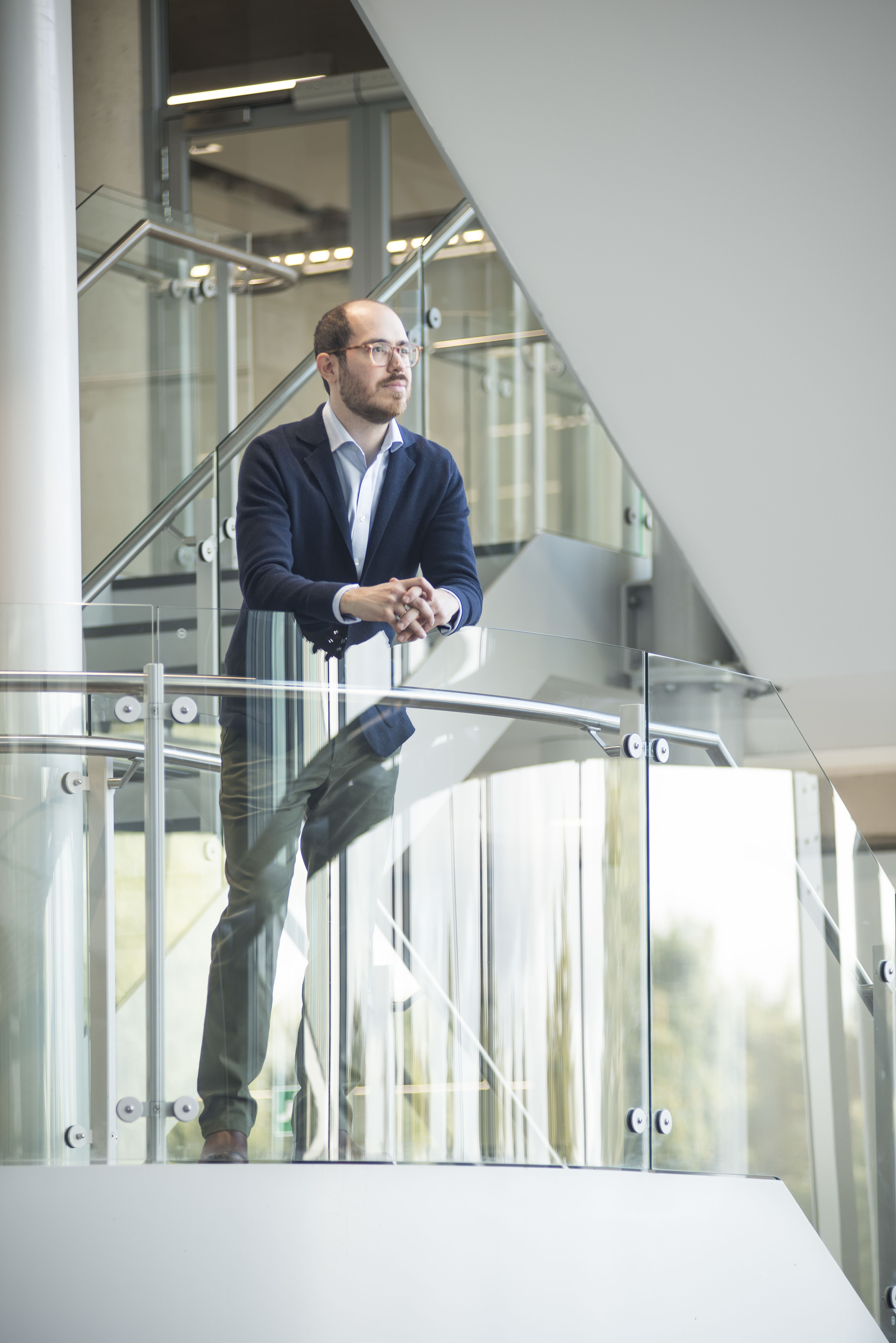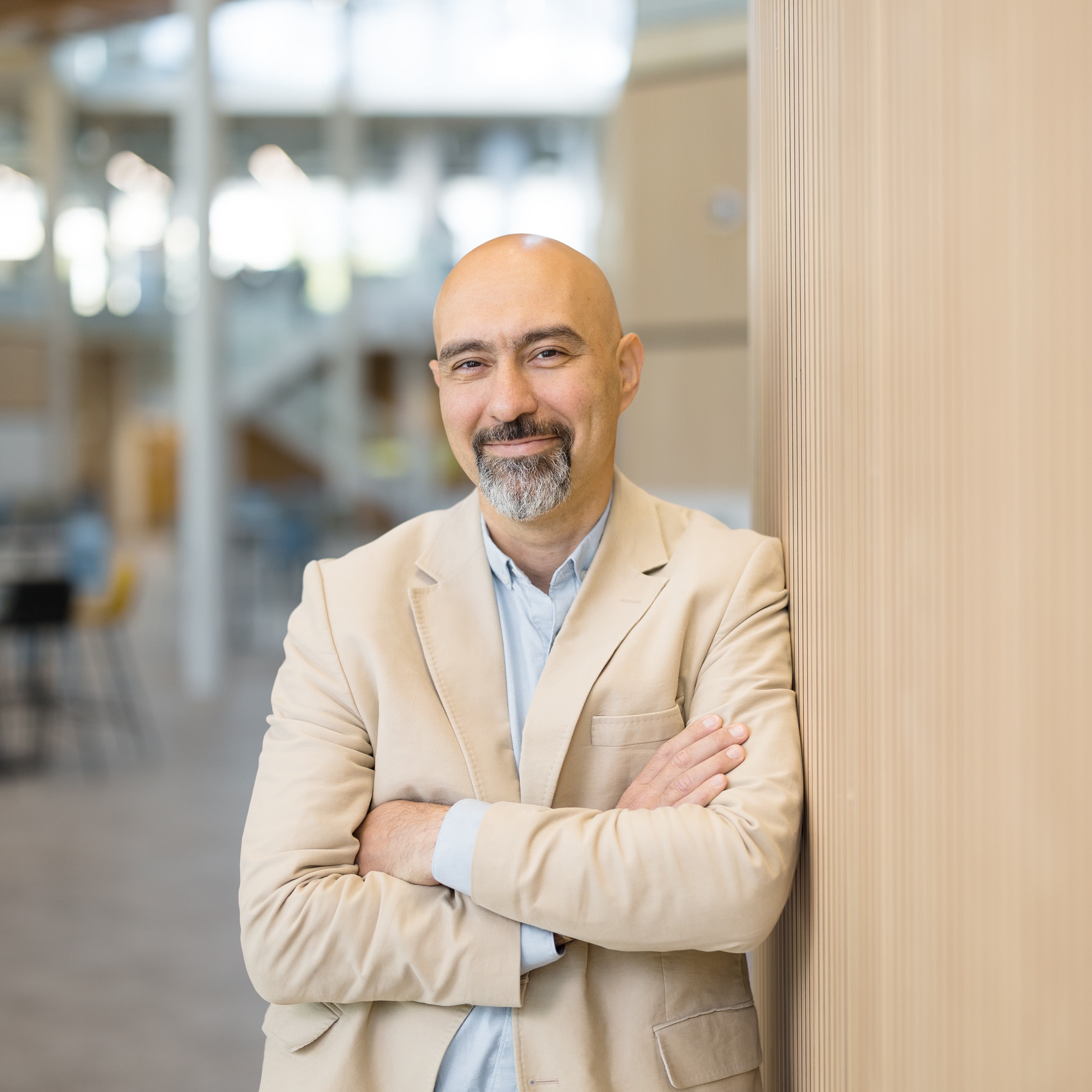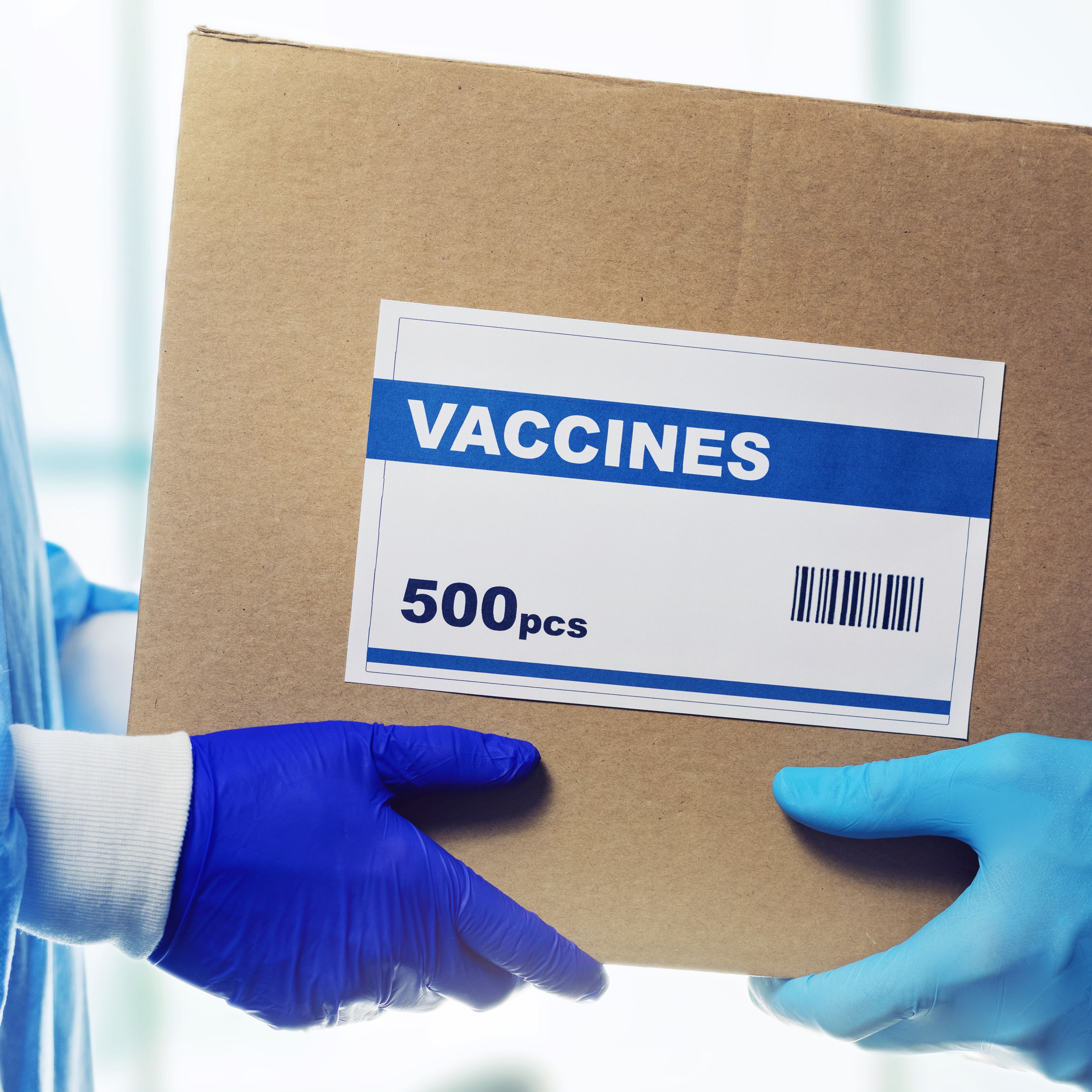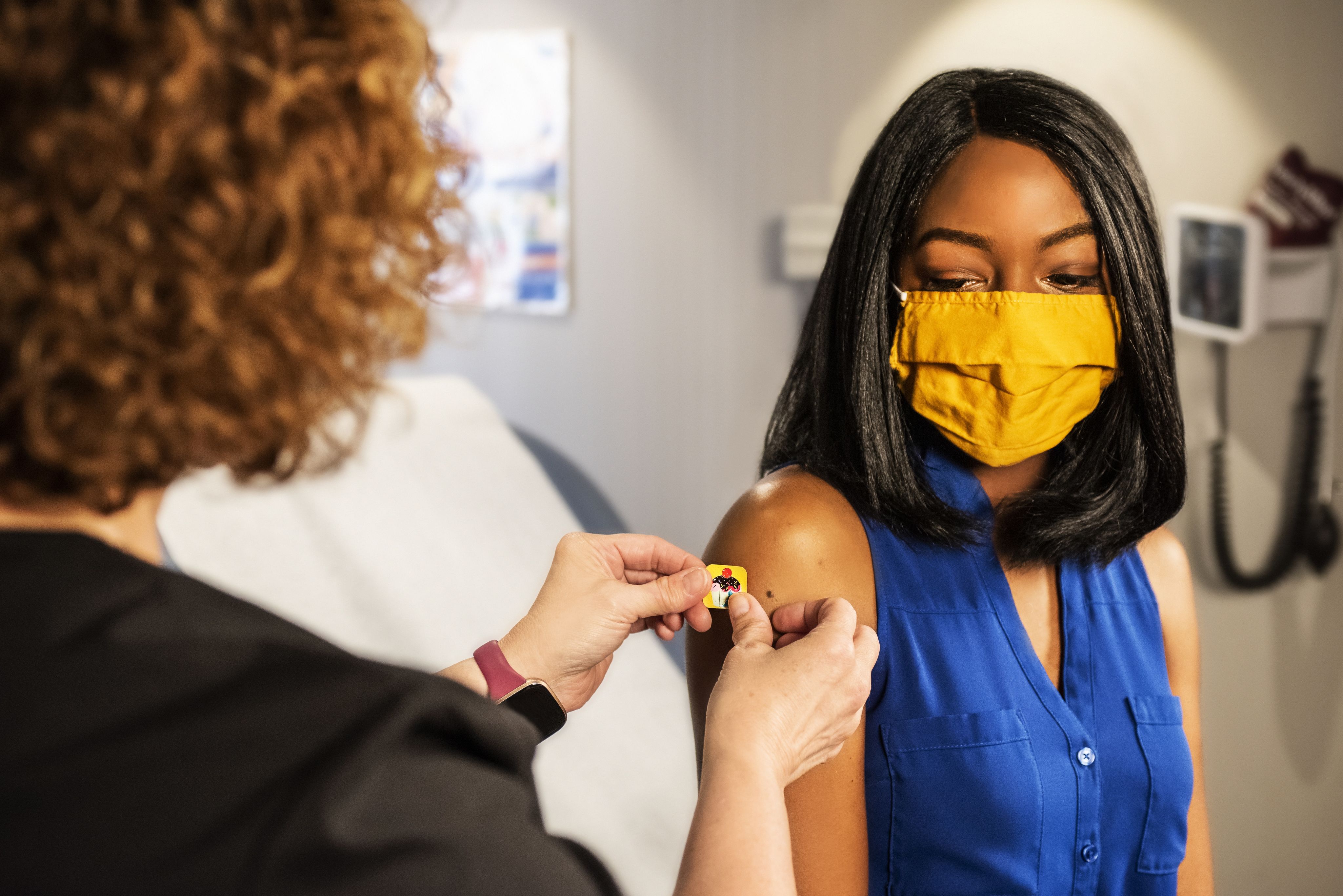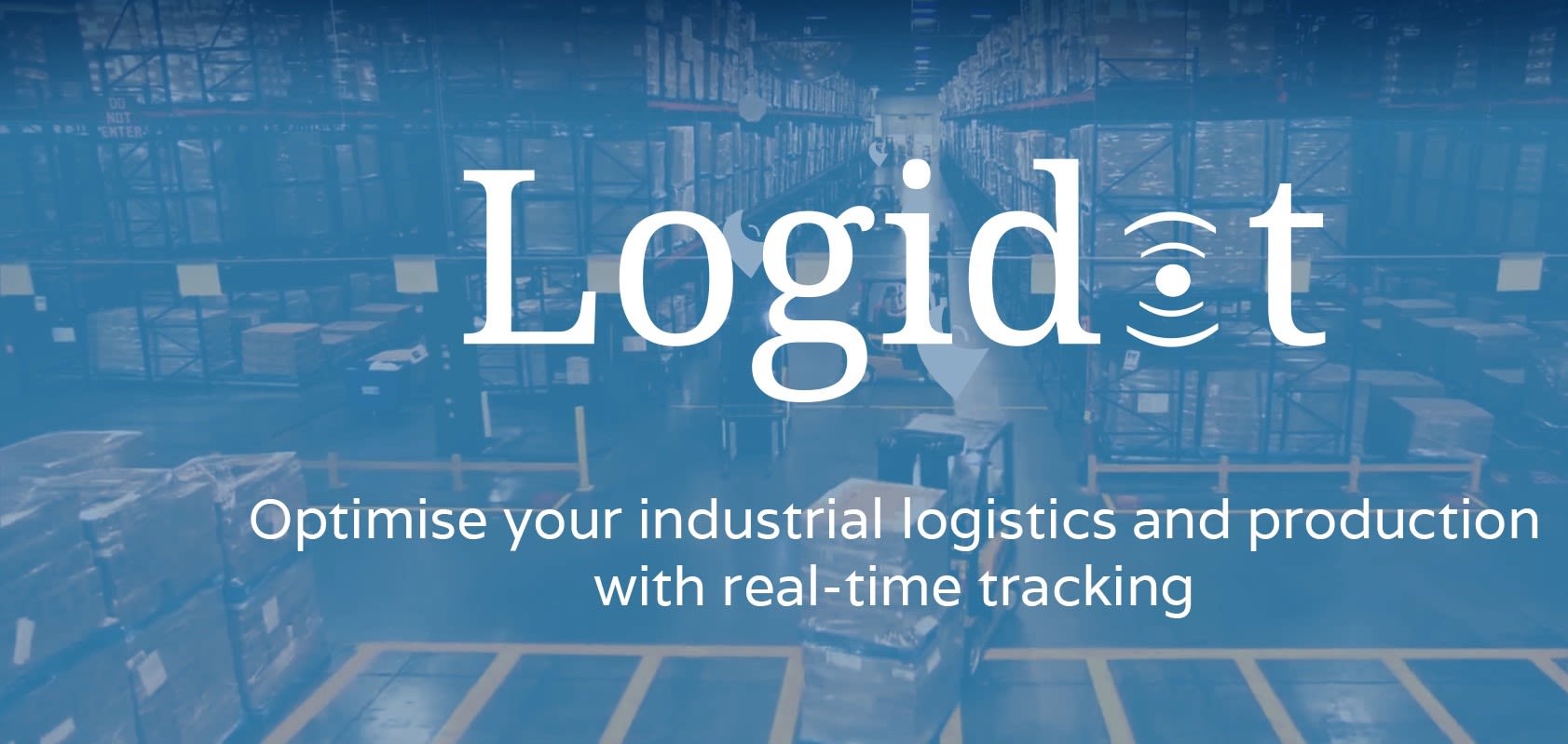Tackling the global supply chain crisis
Our logistics research is speeding up cancer treatment, improving vaccine supplies, cutting airline delays, and streamlining warehousing and delivery

SWALOS - The Centre for Smart Warehousing and Logistics Systems at the University of Bath brings together researchers with a strong interest in solving real-life challenges faced by industry, policymakers and society.
Helping people, businesses, and the environment through these most challenging of times
Fighting cancer with mathematics
SWALOS researchers have developed algorithms to improve chemotherapy treatment, cutting patient waiting times by 80%

Chemotherapy is the most common way to alleviate or mitigate against the spread of cancer. Patients need to go through an exhaustive process with many side effects – SWALOS researchers are working to minimise treatment delays.
“I doubt many people would associate the word ‘cancer’ with ‘mathematical algorithms’ or consider that they can help patients through their chemotherapy treatment most effectively,” says SWALOS team member Dr Melih Celik.
Dr Melih Celik
Dr Melih Celik
“Chemotherapy day units operate with extremely limited resources and under tight schedules. Designing patient schedules is crucial in determining how efficiently these resources are used – we looked at the scheduling decisions at an outpatient chemotherapy unit of a university hospital in Turkey, where these decisions were previously made using simple rules-of-thumb,” Dr Celik says.
The research takes into account both provider and patient satisfaction. From the provider’s perspective, nurse workloads should be balanced, overtime should be avoided to the best extent possible, and chairs should be highly utilised. Patient satisfaction mainly depends on reducing waiting times due to prior patients’ infusions taking longer than expected.
“These needs require some intricate trade-offs, which conventionally demand building complex mathematical models to find the best set of scheduling decisions. But such models take hours of computing time, which prevents their use at medical facilities where timely decisions are of the essence,” he said.
Time study
The research team conducted a time study of the actual infusion times for more than 200 cancer patients to see how they compared with the times that medical staff estimated would be needed when they set their appointment schedules.
"The actual results showed significant deviations from the estimates. For example, of the 39 patients with an estimated infusion time of 150 minutes, actual times ranged between 61 and 196 minutes. We also observed that shorter infusion durations were underestimated, whereas longer ones were overestimated," he said.
Celik said he and his fellow researchers - Dr. Serhat Gul of TED University, and Nur Banu Demir from Wayne State University, were conscious of the need to create a scheduling model that could be used in situations where time was of the essence, ruling out the use of complex mathematical models that could identify the ’best’ set of decisions but which would take too long to be of practical use in a hard-pressed medical environment.
“We built a simpler approach which not only provides ‘near-best’ schedules in only a few minutes and also outperforms the existing schedules of the chemotherapy unit by a long margin; patient waiting times were improved by 80%, nurse overtime was reduced by more than 30%, and chair utilisation was increased by 5%.
“Real life can be obscured by statistics. But consider what those improvements mean to a patient and their loved ones – I am proud to do such meaningful work that applies mathematics and algorithms to caring for people”
Research team facing a 21st century challenge

"The pandemic has embedded the phrase 'global supply chain crisis' in our everyday language and experience - we all know now what this 21st century challenge means for each of us personally.
For some it is a temporary inconvenience, a delayed parcel. For those facing medicine or food shortages, a matter of life and death. For businesses and nations, a question of economic prosperity or failure.
Finding ways to help people through this - even if it all happens under the radar - is the sort of impact I am after - making a difference to people's lives. This was why I founded SWALOS - the Centre for Smart Warehousing and Logistics Systems - in 2021."
Dr Vaggelis Giannikas, SWALOS director
Dr Vaggelis Giannikas, SWALOS director
A perfect storm in global logistics
The global perspective
Supply chain problems were prominent during the Covid-19 lockdown amid a perfect storm of causes, including shifts in demand, labor shortages and structural factors. The Russia-Ukraine conflict and Covid-19 lockdowns in China have exacerbated issues, affecting supply in certain sectors including consumer goods, metals, food, chemicals and commodities.
JP Morgan
The view from business
"The supply chain bottlenecks we're experiencing across the globe start with components. Of all the shortages, by far the most severe is for certain semiconductors, or chips. Like most unpleasant things in our lives over the past two years, there is a single underlying cause of the global semiconductor shortage that is now prolonging and exacerbating it: Covid-19. The demand caused by the pandemic is straining capacity at all points of the supply chain".
Graham Scott, Vice President of Global Procurement at manufacturing company Jabil Inc.
The consumer experience
U.S. consumers saw 60 billion out-of-stock messages in the two years until February 2022 as supply chain constraints made themselves felt. The odds of seeing an out-of-stock message are now one in 59 pages, up from one in 200 pages before the pandemic – a 235% increase.
Adobe
SWALOS: bridging the gaps between technology, maths and people
"We want to understand why new technologies are adopted – or not. What prevents humans from embracing new technologies? What can we do to remove that friction? How can we improve operations management and decision making?” Dr Giannikas asks.
Dr Giannikas notes, for example, that the adoption of technology in the UK is not going as well as the government would like, and that the SWALOS team are looking into why that is happening. The University is host to the government-funded Centre for People-led Digitalisation, which works with the manufacturing industry to help equip people with the right knowledge and skills for successful digitalisation.
“We are finding it boils frequently down to people issues, particularly in the more traditional sectors such as logistics and transport. If people don’t have the skills to be able to embrace new technology, or find it hard to understand the benefits, then they will be reluctant,” he says.
“And this is as much an issue in the executive suite as on the shop floor - arguably more so at the senior levels where halting production, even temporarily, to introduce new technology or patterns of work, is still unpalatable to many versed in traditional ways of working,” he says.
Educating the next generation of business leaders
"A critical part of changing this paradigm is around educating the next generation of business leaders so that they start their careers with a deep understanding of these issues. At the University of Bath School of Management we are playing our part in trying to achieve this through our specialist Master’s programme in Operations, Logistics and Supply Chain Management," says Dr Giannikas, a native of Athens with a background in management and engineering, and Director of Studies for the course.
"This course is for graduates who want to work in this vital and very applied area of management . I am especially proud of its 'Practicum', where students work with a real organisation, on a real-life problem, making a real impact."
Hear employers explain the benefits of the 'Practicum'
Making a difference
"It is all about the impact of our work - not only on business and industry but also on society in general. That’s why we have researchers who work on “hot” societal topics such as disaster relief, vaccinations, healthcare appointment scheduling, sustainable modes of transport and so on.
When I did my PhD and had moments of doubt, questioning what I was doing, a friend said, 'Your research could deliver the right medicine or donor organ in time to somebody in desperate need because you did something good in logistics. Your research could save a life.' I never forget that global supply chain issues are not abstract, academic problems – they are real and fundamental to the quality, even the futures, of all our lives"
Dr Giannikas in the School of Management
Dr Giannikas in the School of Management
Plane speaking
SWALOS research pinpoints cause of airline delays
Helping airlines, passengers and airports

“It is a scene familiar to so many of us – your flight is delayed. Sometimes you might get an explanation – the inbound flight, for example, has been held up, but rarely do we get an understanding of what is at the root of that problem and, more importantly, how can it be fixed? That’s what we’ve done with our study in delay propagation in transport networks,” Dr Giannikas says.
The team, in collaboration with Boeing Company and the Institute for Manufacturing at the University of Cambridge, studied an international hub-and-spoke airline, operating short and long-haul flights from several airports including both domestic and international flights.
The study examined the way in which delays propagate and affect each other, and also the reasons why delay propagation starts and then continues to affect other parts of the air transport network. The researchers drew on data commonly available in airline systems and sought to draw results that can be applied to other hub-and-spoke airlines.
A research method to develop a more holistic view of air transport delays
The case study made use of data extracted by various software systems used by the case airline to manage its operations, such as fleet scheduling, crew management, and passenger itineraries. The dataset covered six months worth of airline operations and includes flight, crew and passenger information. In total the team collected information from over 96,000 flights. The data-driven method consisted of two stages: the first one modelled the airline schedule network and the second extracted delay propagation patterns and root-causes.
"Our data-driven method used a multi-layer airline schedule network perspective which means incorporating aircraft, crew and passenger information in our analysis. Using this method, we were able to develop a more holistic view to air transport delays in contrast to previous studies using only aircraft delay data. Our results show that if we only look at planes and leave out passengers and crew, it is almost impossible to examine – and then fix – delay propagation properly," Dr Giannikas says.
The research showed passenger connections appeared to play a key role in delay propagation, especially for hub-and-spoke airlines that help their passengers move between flights in certain airports.
"So improving airport and airline processes related to passenger connections (passenger and baggage tracking, for example) should reduce the impact of delay propagation," Dr Giannikas says.
The study also identified the importance of effective maintenance and repair of aircraft, as well as the need to improve the ability of airlines and airports to respond to more unpredictable issues, such as severe weather, terrorist threats or industrial strike action.
"An improvement in disruption prediction and recovery capabilities can prepare an airline to deal more efficiently with extreme events, and this might include avoiding network bottlenecks, such as airports and airspace, that can further propagate a delay."
"The research aims to help airline managers better understand the state of their operations and of the causes and impact of their disruptions. This improves their scheduling and planning to minimise delay propagation and helps them develop ways to recover from the problem – and put the passenger back in the air without delay."
Getting vaccine to where it counts
SWALOS researchers developing
optimal delivery systems

The Covid-19 crisis has put healthcare systems under enormous pressure. Although the number of people hospitalised with Covid is reducing in countries across Western Europe, the current crisis will not be fully stopped until a vaccine is rolled out across the world.
Professor Güneş Erdoğan, a member of the SWALOS team, is developing location, routing, and prioritisation and allocation models to distribute and administer vaccines in an efficient, timely and fair way.
Professor Güneş Erdoğan
Professor Güneş Erdoğan
The project will run until the end of March 2023 and will develop models to locate and route medical facilities to administer vaccines, as well as develop scenarios for prioritisation and dynamic simulation to allocate vaccine quantities and vaccination capacity
Research method aims to minimise total mortality
The project combines epidemiological models with resource allocation models in locations covered by NHS Trusts in the UK. This translates to models that estimate the number of infected and deceased based on vaccine allocation decisions. The objective of the model is to minimise total mortality, with a secondary objective of maximising equity – achieving a roughly equal percentage of people vaccinated within each location. The team have collected data from the NHS about hospital capacities, and the infection spread parameters for Covid to feed into the optimisation model. The output is a week-by-week allocation of vaccines to NHS Trusts.
“This project aims to address one of the most pressing needs in healthcare right now. These models minimise risks of disease transmission and maximise the number of people that can be reached and vaccinated, while allowing healthcare professionals to prioritise.”
From mouse click
to front door
SWALOS researchers
join forces with
Logidot to improve
warehouse operations
and meet demand
for ever faster
online delivery

SWALOS has joined forces with Industrial Internet of Things company Logidot to develop technology for improving warehouse operations, cope with demand for ever faster online deliveries and alleviate the stresses placed on the global supply chain.
"This collaboration is a great example of how applying cutting edge academic know-how to real-world industrial problems can benefit not only the involved companies' innovative depth but also the researchers by increasing the relevance and scope of their work through exposure to problems and methods only encountered in the field. "
SWALOS is bringing its algorithm and modelling expertise to the project, while Logidot will further develop technology to track human pickers, forklift trucks, handheld scanners and other hardware at work in warehouses in real time.
“The pandemic has brought our reliance on smooth supply chains to the fore and triggered new trends in warehousing which are all about improving distribution to customers and responding to changing demands,” says Dr Giannikas.
The technology will bring cost savings in traditional warehouse set-ups, as well as aiding the rising trend of urban micro warehouses, and dark stores cropping up in shopping centres and towns across the UK. These new spaces allow companies to fulfil fast deliveries more easily, locating themselves close to customers, with good transport infrastructure, but they are currently often ill equipped to handle high volumes of orders and supply chain fluctuations.
The solution will be based on Logidot's indoor/outdoor tracking technology to continually monitor the movements of material handling vehicles (forklift trucks), equipment (barcode scanners) and order pickers wherever they are in a warehouse.
Very low power wireless hardware have been developed for ease of installation and reduced maintenance cost, alongside innovative dynamic routing algorithms to add constraints (e.g., dispatch times, synchronisation with delivery services and customers pick-ups, zoning, routing and picking optimisation) based on warehouse layout and operational data inputs specific to urban dark stores and micro-fulfilment centres.
“We’re confident that this project will demonstrate how emerging technologies coupled with smart decision making can help tackle the real-life problems faced by the logistics and retail industries"
"The University of Bath stands out in this field in its focus on impacting the real world. We are not in the business of abstract, academic solutions. Our business is solving real-world problems and ensuring our research is adopted."


